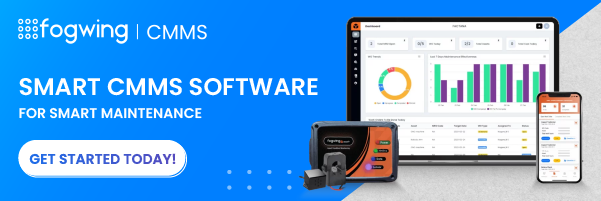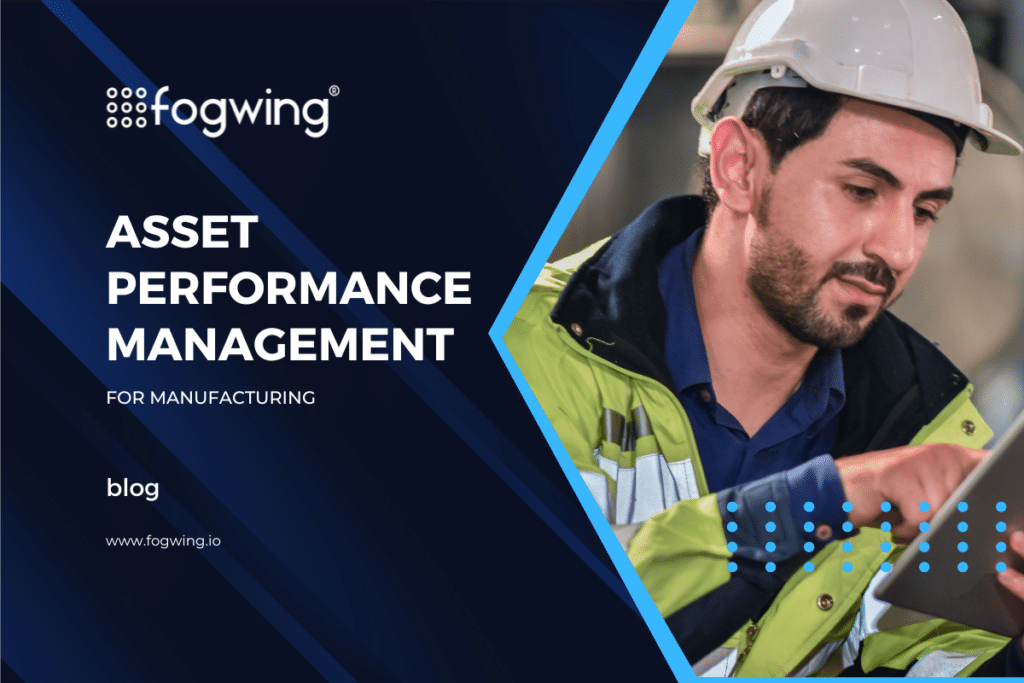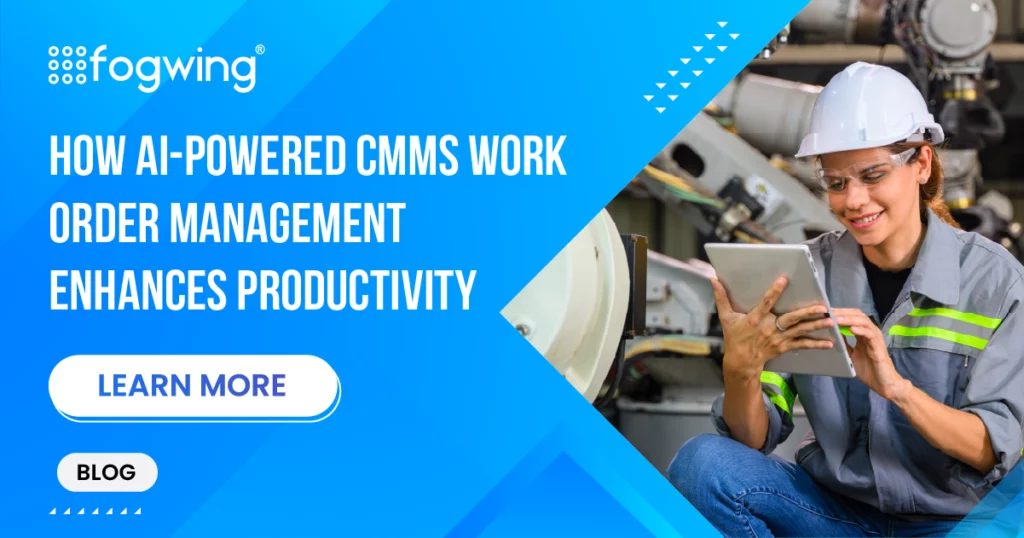Asset Performance management (APM) is a strategy utilized by the manufacturing industries to optimize the effectiveness of manufacturing assets. With the increase in the adaptation of digital transformation across the manufacturing sectors, asset lifecycle management is the primary candidate for digitalization. So industries need to prioritize leveraging asset management software for maintenance operations.
This article will walk you through the importance of apm software and the features required to address the challenges for the manufacturing industry.
Why is Asset Management software essential for Manufacturers?
Asset management software assists manufacturing industries in asset lifecycle management and efficiently facilitates maintenance tasks for higher machine performance. Asset performance management (APM) is part of Asset Management and results in asset availability and reliability, which enables businesses to make more impactful planning decisions.
Asset performance monitoring is crucial for timely producing and delivering end products in manufacturing industries. So, organizations must implement APM tools that guarantee the availability and reliability of the assets required for their operations.
Asset Performance Management in manufacturing refers to the systematic approach of effectively developing, operating, maintaining, upgrading, and discarding tangible and intangible assets’ total cost of ownership (TCO) and Return on Invest (ROI).
It’s about apprehending in-depth knowledge and detailed information about the asset’s value and health.
- Asset management solutions can help manufacturers stay ahead of customer delivery and satisfaction by improving the workflow and productivity of assets.
- Asset Management software facilitates small, medium, and large businesses to keep track of their assets effectively.
- Asset management software enables organizations to predict and identify the potential risks of unplanned downtime that could arise.
- Asset monitoring provides real-time asset health information and helps organizations conduct efficient asset performance management.
What is Enterprise Asset Management?
Enterprise Asset Management is a comprehensive practice provides larger organizations to conduct advanced operations like asset performance monitoring, work management, planning, scheduling, inventory management, environmental health and safety initiatives, and supply chain management in their working process.
Monitoring, Managing, and Forecasting are three essential Enterprise Asset Management (EAM) aspects.
Benefits of Enterprise Asset Management
- EAM focuses on the overall management of assets in an organization, including asset lifeline tracking, maintenance management, inventory control, and financial management.
- EAM optimizes the use of assets, reduces downtime, and extends asset lifespan with the standardized process to manage assets.
- EAM enables organizations to make better-informed decisions by providing a centralized view of asset-related costs.
What is Asset Performance Monitoring?
Precisely monitoring the performance of an asset during its operations is known as Asset Performance monitoring. Performance monitoring of assets is considered an essential factor of dependency in manufacturing sectors for an organization that depends on physical production. Asset performance monitoring provides organizations with real-time data on asset health, enabling the plant operators to schedule maintenance requests and allowing the operators to deliver maintenance requirements before the asset failures. With the involvement of Industrial IoT, organizations undertake the performance monitoring of assets with the utmost clarity.
How does modern Asset Performance Monitoring software work?
Asset Performance Management software offers mechanisms for correlating data, identifying bottlenecks of asset performance, and even alerting maintenance managers about potential issues within the system. APM solutions incorporate the ability to capture, integrate, visualize, and analyze the asset data, to enhance the accessibility and consistency of assets.
Eventually, the data collected by APM tools must be analyzed and utilized by organizations. Some of the collected data might be too subtle to be identified manually, and it’s where the APM software can help. The advanced Machine Learning and Artificial Intelligence technologies allied with the APM tools enable organizations to analyze the asset health data collected during asset performance monitoring to conduct effective asset performance management.
Data capture, Data Integration, Data Visualization, Advanced analytics, and many other advanced capabilities encompassed in APM software, which enhances the reliability and availability of assets in manufacturing industries. APM predicts asset failures by collecting asset health information and enabling predictive and proactive maintenance activities to reduce asset breakdowns and downtimes. It leverages Asset information from enterprise software like ERP, EAM, MES, PLM, and CMMS systems.

What is APM (Asset Performance Management) ?
Asset performance management is an integral part of the overall asset management function. Using a spreadsheet to capture the asset information may not be an efficient way to manage data; instead of, using an APM software solution.
Various industries today adopt asset performance management software to increase their ROA (Return on Assets). APM solution enables organizations to improve reliability and expand asset life with low-cost investments. Return on asset is a financial ratio specifying the company’s profit concerning its total assets. It enables industries to determine how effectively an organization can utilize its assets to generate profit. The APM software provides enterprises with accurate information related to asset performance to reduce unplanned repairs, asset failures, and downtime.
Three Pillars of Asset Performance Management
Asset Management solution is not just about the technologies but a strategy that holds people, system, and process together to achieve operational excellence. People, Processes, and Technologies are three pillars of APM that help organizations optimize asset management.

People
Knowledge and expertise are critical to managing industrial asset productivity and availability. It is essential to provide knowledge and guidelines to them, which will help them to perform maintenance tasks more efficiently. Asset monitoring software provides asset data and performance metrics to improve learning. Asset Performance Management ensures that organizations follow all the required standard operating procedures to enable cultural and uniform technical understanding.
Practice
Maintenance practice represents the process and regulations enforced by the organizations, which ensures people follow the procedures, instructions, and reporting to achieve higher asset performance.
Technology
Technology-empowered asset management facilitates operational improvements by ensuring asset connectivity for insight and advanced intelligence for effective maintenance operations.
Key Features of APM Solution
Condition-Based Asset Management
Condition-based maintenance (CBM) is a strategy in asset performance management that decides when and what assets require maintenance. It monitors asset health parameters in real-time to identify and analyze the signs of declining performance and approaching asset failures. APM solution involves IoT sensors to measure the asset health parameters like temperature, pressure, noise, humidity, and vibrations.
It also involves various methods like visual inspections, scheduled-based tests, non-hostile measurements, and performance data to identify asset health uncertainties and conduct condition-based asset performance management. A CBM aims to identify the issues with assets in advance and schedules a maintenance request before the machine fails or its performance falls below the required level in an APM platform.
Predictive Maintenance
Predictive maintenance requires advanced technologies such as IoT and ML to capture the asset health parameter and predict maintenance requirements. Organizations usually perform various preventive and reactive maintenance operations while performing APM. Regular preventative and reactive maintenance increases the maintenance cost since it enforces regular maintenance without predicting the necessary maintenance work.
Prescriptive Asset Maintenance
It involves advanced technologies like Machine learning, Artificial intelligence, Pattern Recognition, and Diagnostics to identify the upcoming asset health conditions to have an anticipated repair recommendation. The Prescriptive Asset Maintenance strategy detects the issue ahead of the asset failures, determines the reason for the asset failure, and recommends solutions to help organizations mitigate the problem.
Key Benefits of Asset Performance Management
Extend asset life with maintenance
Asset Performance Monitoring enables organizations to monitor assets more smartly. It allows the remote monitoring and analysis of critical assets and operations. Preventive maintenance help to reduce asset health issues and schedules the maintenance in advance to reduce downtime and asset failures. The APM tools effectively keep records of asset-related factors such as asset performance management history, maintenance records, real-time asset performance records, environmental data, and inspection records to conduct effective asset maintenance.
Reduce asset downtime
APM enables the tracking and monitoring manufacturing assets. APM software also provides accurate and quick analytics reports to optimize asset health. It accurately monitors the real-time asset health conditions, costs, and performance and initiates asset performance management activities.
Effective Inventory Management
Inventory management is one of the essential parts of manufacturing industries. Organizations can have multiple branches of factories worldwide, which needs an asset management system. In such situations, organizations must maintain a centralized system, as there is a high chance of human errors and mismanagement with just the people involved in the asset management process. APM software centralizes business operations, conveying no incorrect data. APM solution keeps proper track of the stocks available in the inventory to reduce decreased productivity, business losses, and untimely deliveries.
Conclusion
Various factories and facilities adopt Asset Performance Management Software, to effectively manage their asset performance. The Solutions combine both conventional and advanced asset management solutions. The traditional maintenance ideas combined with digital technologies offer user-reliable asset management software.
Fogwing’s CMMS is the best CMMS software that provides asset performance monitoring, and maintenance management features that help factories and facilities manage their asset life cycle. It enables organizations to manage and monitor assets and equipment across various locations, track inventory for spare parts for maintenance requirements, efficiently schedule maintenance activities, deliver reports to ensure asset compliance, and many more functionalities related to asset performance management. Having access to the appropriate APM software for asset monitoring is essential. The APM solutions provide the capability to factories and facilities to manage all the asset maintenance activities in one place.

FAQs
1. What is asset performance management (APM) in manufacturing, and why is it important?
Asset performance management (APM) in manufacturing refers to the use of technology and strategies to monitor, maintain, and improve asset health. It helps manufacturers reduce unplanned downtime, extend asset life, and make data-driven maintenance decisions. APM is important for ensuring machine reliability, increasing production efficiency, and maximizing return on assets (ROA).
2. How does asset management software support asset lifecycle management?
Asset management software helps manage assets at every stage—from purchase to disposal. It tracks performance, schedules maintenance, and gives real-time insights to reduce downtime and extend asset life.
3. What are the benefits of using APM software in manufacturing operations?
The key benefits of using APM software include improved asset reliability, reduced equipment failures, predictive maintenance capabilities, lower operational costs, and extended asset lifespan. It also enhances decision-making by providing real-time asset health data and centralized maintenance records.
4. What is the difference between EAM and APM in industrial asset management?
Enterprise Asset Management (EAM) is a broad system for managing the entire asset infrastructure, including inventory, work orders, and compliance. Asset Performance Management (APM), on the other hand, focuses specifically on monitoring asset health and optimizing performance through real-time analytics, IoT sensors, and predictive maintenance.
5. How can predictive maintenance reduce asset downtime in manufacturing?
Predictive maintenance spots issues early using sensors and data, so repairs happen before breakdowns. This helps avoid unexpected downtime and keeps machines running smoothly.




